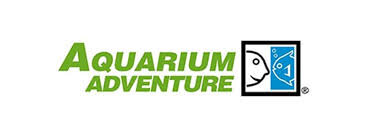Aquarium Water Pt.2
Dissolved Gasses (Oxygen, Carbon Dioxide)
Gasses dissolved in the water play a large part in a fish’s environment. The level of oxygen directly affects the survival of any life in the water. Too little, and fish will die. Carbon dioxide is another gas found in water. Levels too high of this can kill fish as well. The levels of both of these gases are independent of one another but both depend on two main things: the amount of life in the tank respiring, and the level of surface agitation. Fish respire by taking in oxygen and releasing carbon dioxide. Increased quantity of fish in a tank means increased respiration occurs. Surface agitation is what brings oxygen into the water, and liberates carbon dioxide at the same time. A buildup of carbon dioxide in the water before it gets released can form carbonic acid (CO2 + H2O = H2CO3) which will eat away at the alkalinity of the water allowing for the possibility of pH fluctuations.
Turbidity (Particulates in the Water)
Turbidity is what is commonly referred to as “cloudy water”. It can result from small particles of sand, rock or gravel suspended in the water column, or from clumps of bacteria or algae that float through the aquarium. If it is fine debris like sand, a high level of cloudiness can irritate the fish’s gills, and it is important to limit this exposure. There are strong mechanical filters that can quickly reduce turbidity, such as micron and diatom filters, but an easier path is to avoid this type of cloudy water in the first place. Thoroughly rinsing substrates prior to putting them into the tank goes a long ways towards reducing turbidity. Letting the cloudiness settle for a few days before adding animals can also help in limiting problems.
Sometimes, the cloudiness is due to clumps of bacteria or algae supersaturating the water. In these instances, measures can be taken to reduce and eliminate the cause, but it is important to note that this type of cloudiness is not harmful to the fish (however, water quality may be suspect).
Temperature
Temperature plays a critical role in fish’s lives. Because fish cannot regulate their own temperature, they must rely on the surrounding environment to keep them at a safe operating temperature. The best a fish could do is move from an area of inappropriate temperature to one that better suits it. In fact, many fish have boundaries in their habitat created by regions of temperature.
In the aquarium, we typically keep tropical fish, where the water temperature ranges from 75°F to 82°F. Within this range most fish can live and breed comfortably throughout their lives. The usage of aquarium heaters allows us to maintain a stable temperature. Goldfish, and a few other fish, prefer cooler temperatures, from 60°F to 70°F. Usually, no heater is necessary when keeping these fish and it is important to make sure that the temperature is not too high from sources such as lights and pumps.
While every fish has its preferred living temperature, the overriding factor is stability. Many fish can thrive outside of the normal range of temperatures provided there is some level of stability. A range of +/- 2°F around the target temperature is considered a stable environment.
Water Exchanges
The special secret to maintaining excellent, healthy water quality for all of the living creatures in the aquarium is by recreating the rainfall/evaporation cycle that occurs in nature. The easiest way to do this is through aquarium water exchanges, taking old water out (evaporation) and replenishing with new water (rainfall). Taking old water out diminishes toxic elements that have built up and re-placing with new water adds additional proteins, amino acids and nutrients needed for growth and development by all living things.
